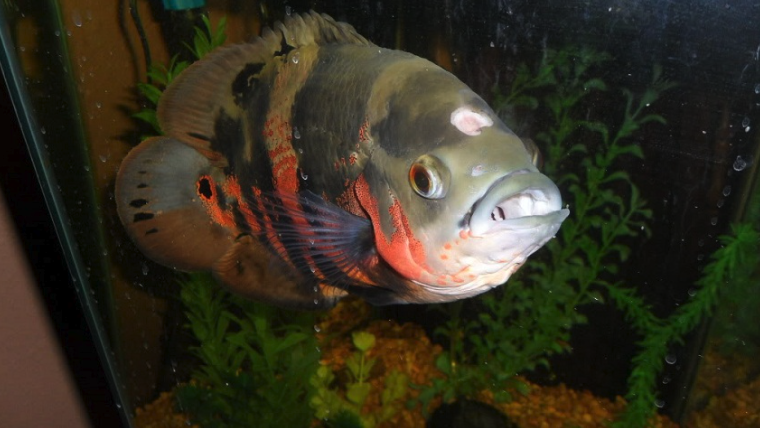Causes and Treatment of Hole in the Head Disease
Hexamita, a common cause of head hole disease, infects the digestive system, primarily the intestinal tract. It can then spread to the spleen, kidneys, and gall bladder. As the disease progresses, classic lesions develop. These lesions are characterized by discharges of white threads. It is important to treat the disease early to avoid complications.
Symptoms
Hole in the head disease affects Oscar fish, and can be quite a nuisance for any fish owner. A hole forms in the fish’s head, and it can also affect the rest of its body. Fortunately, this disease is treatable. The early symptoms of the disease are small pits on the head of the fish, and it is easily diagnosed if the fish starts to develop them.
Although the exact cause of hole in the head disease is still not fully understood, experts suggest that it is caused by an underlying parasite or environmental condition. Typically, a parasite called Hexamita is the culprit. The parasite causes the holes in the head, and it invades the lateral line. Once the parasite has infected the lateral line, it can result in secondary bacterial infections and lesions. If this happens for a long time, the fish will die.
Head hole disease can be fatal if left untreated, but it is treatable. Symptoms of the disease can include a fish twitching and a loss of balance. It may also appear to have a large hole on its head. Other warning signs of head hole disease include holes on the face or gills. Luckily, if diagnosed early, the disease is curable and can even be prevented.
Treatment
Treatment for head hole disease should be based on the symptoms and the severity of the infection. If the disease is mild, the fish should heal with time, but if the disease is more advanced, it may be difficult to recover. There are various treatments that can help the fish recover. One of the best options is changing the fish diet to a higher vitamin content. Another option is to increase the quality of water in the aquarium. It is also recommended to remove any chemicals that the fish may be exposed to.
The main cause of head hole disease is an overgrowth of a flagellate parasite called Hexamita. This parasite normally infects the intestinal tract, but it can also spread to other parts of the body. After it spreads to the head, small holes form in the skin and form a bacterial infection.
Prevention
A good way to avoid head hole disease is to take measures to improve the water quality in your aquarium. Quarantine tanks and netting can also prevent the spread of the disease. Another important prevention tip is to limit contact with wild fish from infected lakes. Wild-caught fish will likely have been exposed to a number of diseases and may not be able to be cured. If you do encounter an infected fish, treat it as soon as possible.
While the exact cause of head hole disease has not been fully researched, experts say that the condition is caused by a parasite known as Hexamita. This parasite normally affects the intestine track, and after a period of time invades the lateral line. This causes lesions to form and secondary infections.
While many factors contribute to the development of hole in the head disease, a primary factor is stress. Stress in fish can be caused by a variety of environmental conditions, including water quality, diet, and aggression. When a fish experiences chronic stress, their immune system is weakened. This makes them more susceptible to localized infections and decreased reproduction.
Hexamita parasite
The most common symptom of the Hexamita parasite is a pit in the head. The parasite eats away the skin on the fish’s head and eventually leaves a hollow head. If you notice pits in your fish’s head, you should take them to a fish store or vet for a proper diagnosis.
The parasite is a worm that lives inside the fish and can only be spread to other fish by direct contact. In order to avoid infecting your tank, quarantine any new fish for at least two weeks before adding them. New fish should not be introduced to an infected aquarium for at least two weeks, and possibly longer.
The symptoms of Hexamita infection are similar to those of a hole in the head disease, but they are different. The parasite lives inside the fish’s intestinal tract and can spread to its other internal organs. If left untreated, the infection can lead to fish death.
Poor water quality
One of the main causes of head hole disease in marine fish is poor water quality. The problem can also be caused by nutritional deficiencies and inadequate dietary iodine. A faulty water quality can weaken a fish’s immune system. Listed below are some of the symptoms and possible treatments for head hole disease in marine fish.
Head hole disease is caused by poor water quality, so first determine the chemistry of the water. You can buy test strips, but it’s better to use liquid-based test kits. Ensure that the parameters are within the range for your species of fish. You should also isolate any fish suffering from this disease and quarantine them until the problem is solved.
Over-filtration
Head hole disease is a common problem in tropical fish. It can be caused by a variety of factors including poor water quality, over-filtration, or unknown chemical poisons. It’s often hard to cure if the disease has progressed to its advanced stages. Some common measures to cure the disease include improving the quality of water in the aquarium and changing the fish’s diet to one high in vitamins and minerals.
This disease is characterized by pits in the head and erosive tissue. It may lead to secondary infections. It can be particularly destructive to surgeonfish, angelfish, and tangs. Fortunately, this disease is often preventable through good husbandry practices and maintaining a low-stress environment.
Water quality is important to fish, and the type of filtration system you use may play a role in preventing the disease. Insufficient water quality can lead to high levels of nitrate, ammonia, and nitrite. Higher levels of these elements are linked to an increased risk of Hole in the head disease in fish.
Poor diet
Head hole disease is a common health problem in fish. It is caused by protozoa that can infect freshwater and saltwater fish. The symptoms of hole in the head disease include emaciation, a lack of appetite, and white stringy feces. If your fish has this disease, it is important to treat it as soon as possible with medicated food or direct injection. In addition, regular water changes and proper water parameters are necessary to cure the disease.
Head hole disease pits are usually small, depressed areas on the fish’s head. They may be white, grey, or brown in color. In more advanced cases, the infection may erode large areas on the fish’s face and sides. These erosions begin as pinhole-sized defects and can spread to multiple spots at once or as a single focal lesion. It is especially common in angelfish and tangs, which seem to be predisposed to the condition.
Stress
There are several reasons why fish may develop hole in the head disease, including poor water quality, overcrowding, and poor nutrition. This disease usually affects older fish. The symptoms of the disease include pitting-type lesions on the head and lateral line. It can also lead to secondary infections. If left untreated, the infection can lead to loss of appetite and death.
The most common cause of hole in the head disease is a parasite called Hexamita. The disease can develop quickly as the parasite spreads from the intestine to the lateral line. As the disease progresses, secondary infections and bacteria can develop. Stress is also another common cause of this disease. Fish with poor diets are more likely to develop the disease than those with good nutrition. Moreover, a poor diet can deplete the immune system of the fish.
Another risk factor for hole in head disease is poor water quality. Poor water quality can lead to infection by parasites. To avoid this, you must maintain the quality of water in your aquarium. It’s also advisable to keep your fish in quarantine tanks. You should also avoid contact with wild fish. Wild-caught fish are most likely already infected with several diseases. Unfortunately, curing them may be difficult. When a fish develops symptoms of the disease, it’s important to take action immediately.



